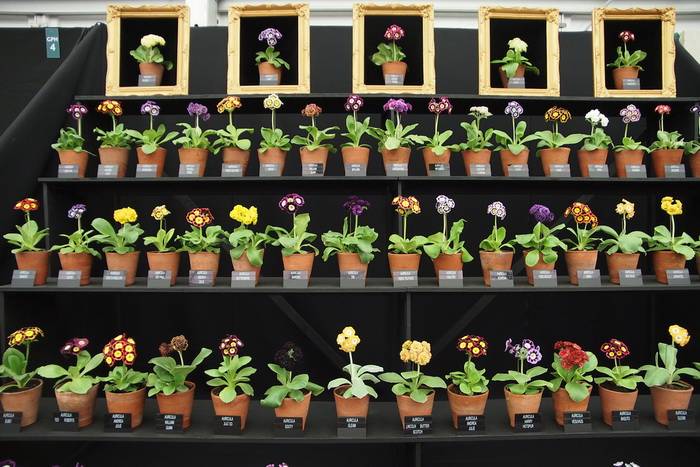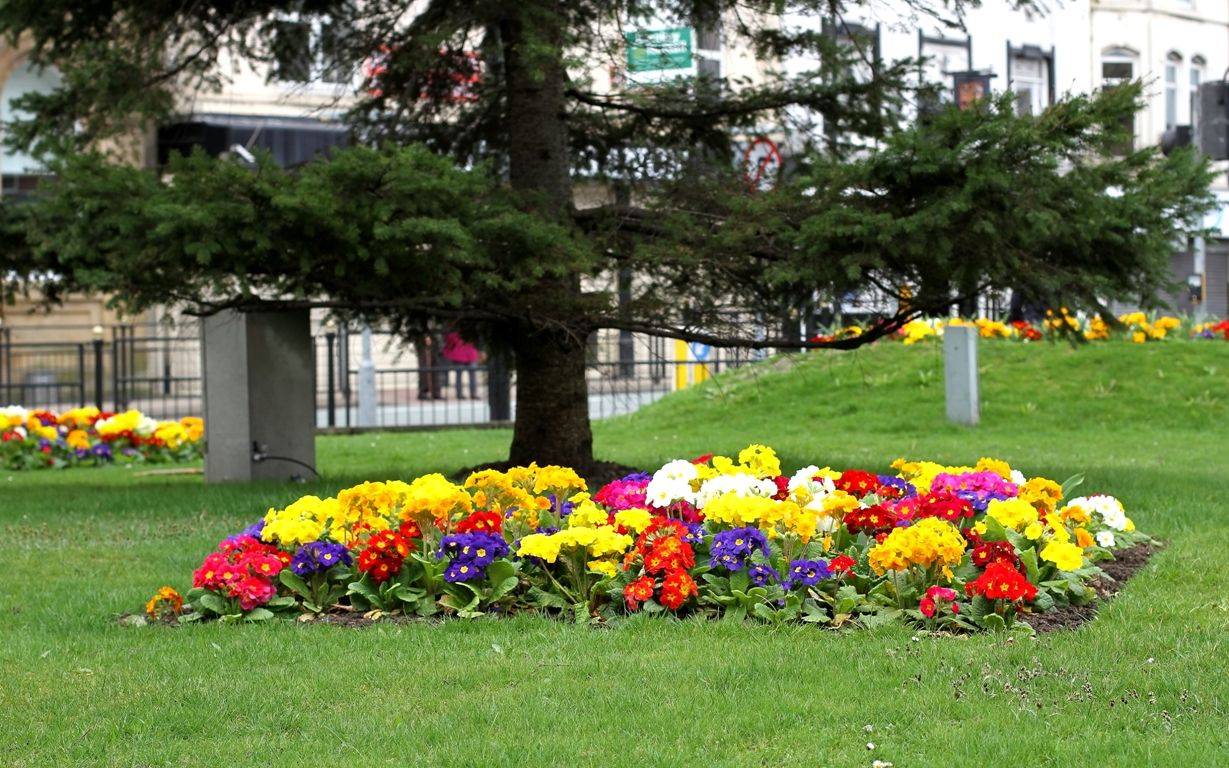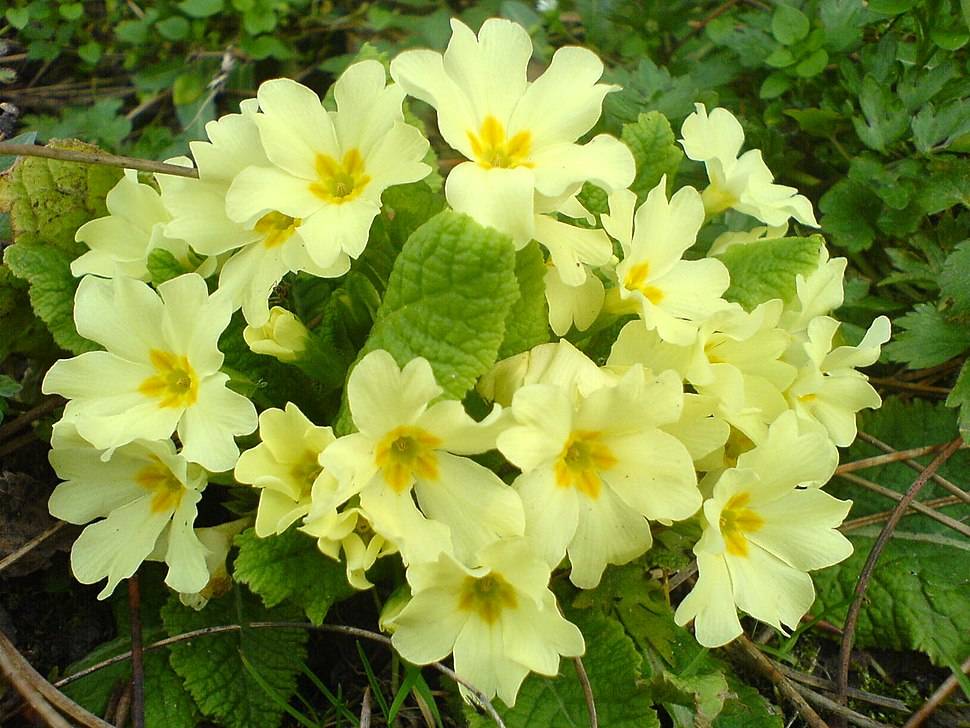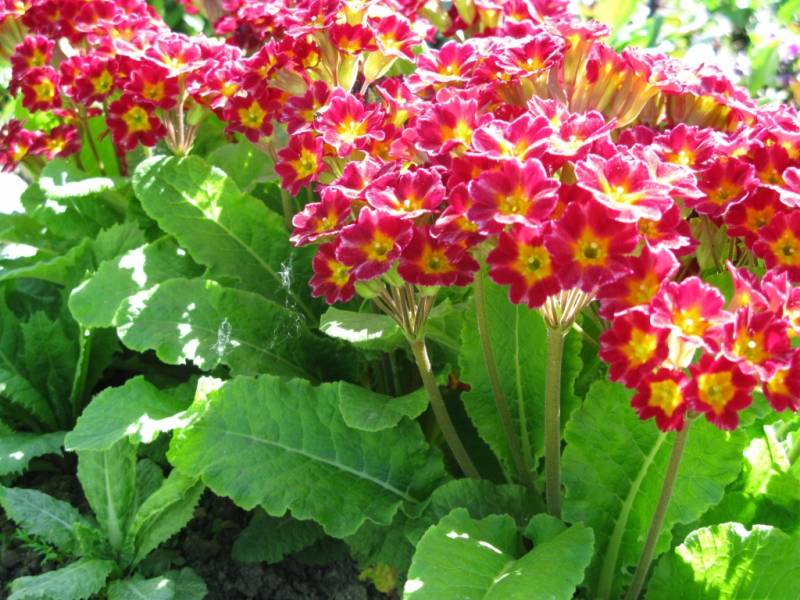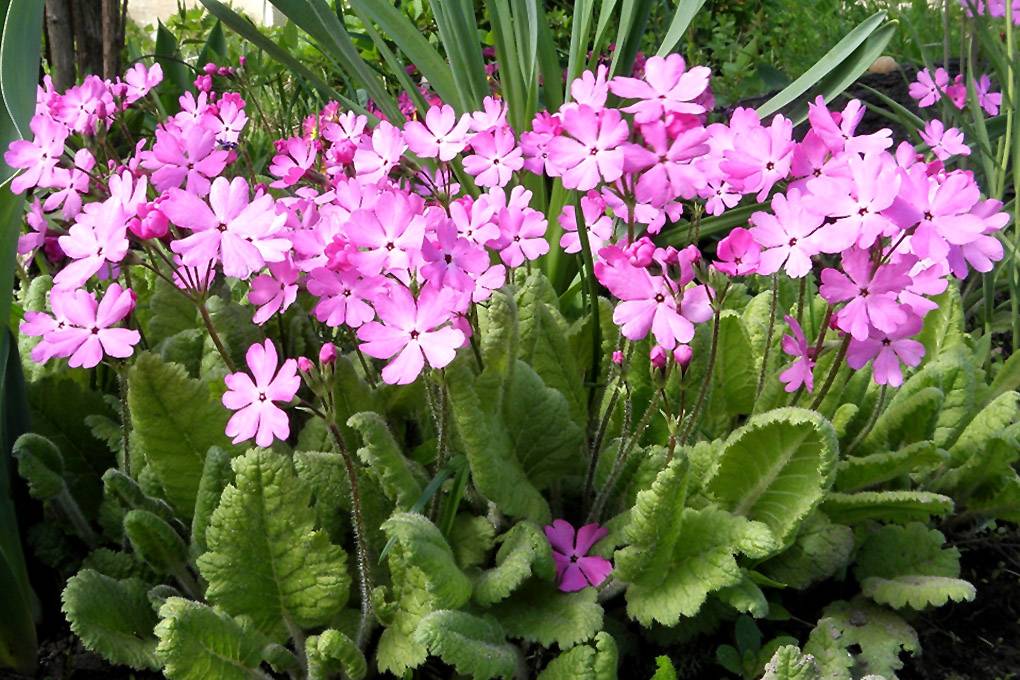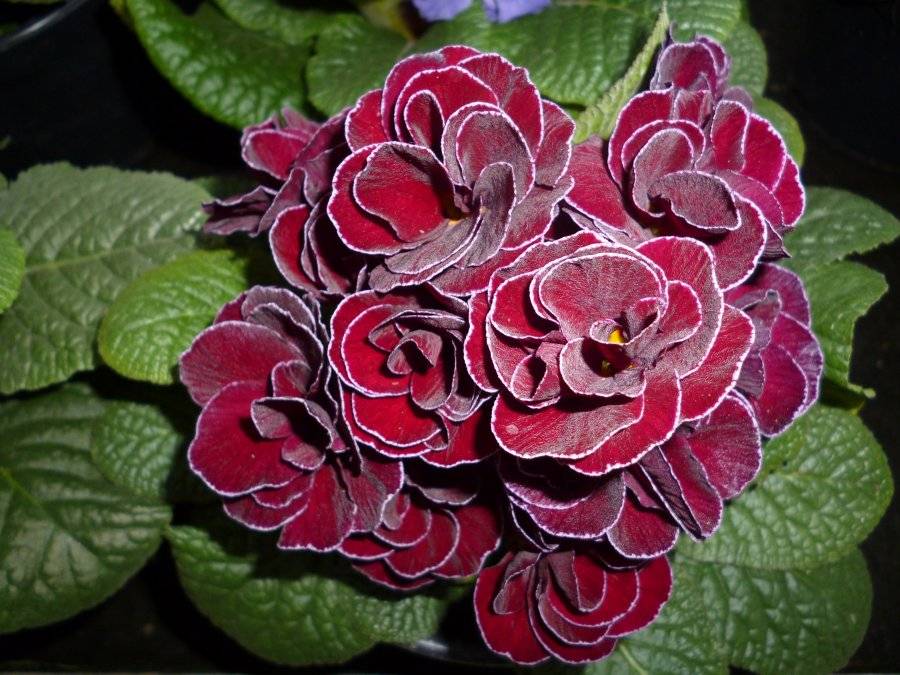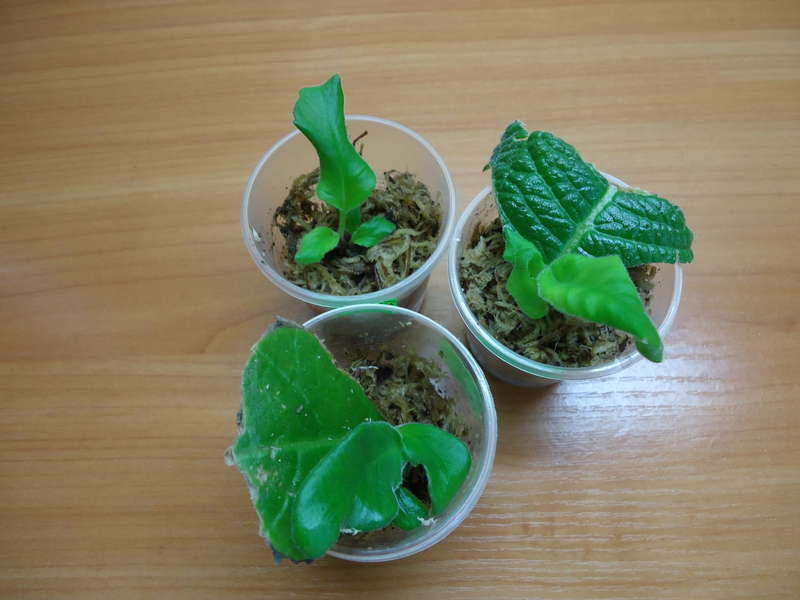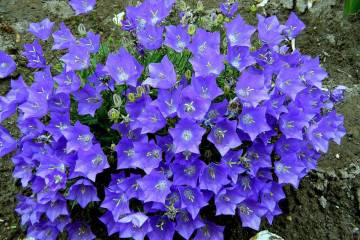Perennial primrose - growing in the country
Content:
Primrose is a flower known to almost everyone. It is found on most flower beds in spring and pleases everyone with its brightness, which is so lacking in spring after a long snowy winter. Due to the variety of colors and the simplicity of growing primrose, you can create bright, amazing and unique compositions on your flower beds or balconies. Interestingly, primrose can be easily grown indoors.
Garden primrose - what is this perennial flower
The garden species of primrose belongs to the Primroses family. The word Primula itself is translated from Latin as "first". Therefore, those who do not know the name of the flower call it primrose. There are other popular names for primrose - lambs, talismans of happiness, keys.
In ancient times, magical properties were attributed to the flower, it was used in decoctions, potions, and also for medicinal purposes.
Brief description and history of origin
Primula is a herbaceous plant, the natural distribution area of which is quite wide. It can be seen in Africa, Asia, Europe, the Middle East. It is not known when people first met this plant, but even in ancient Greece it was considered a medicinal flower of the gods of Olympus. One of the legends of Scandinavia says that the goddess of fertility Freya opened spring with primrose flowers.
In Germany, flowers are considered the keys to marriage. In Celtic and Gallic mythology, the plant is remembered as one of the components of a love potion. In Danish legends, it is said that an elf princess who dared to love a man turned into primrose flowers. The ancient Greeks tell that the simple youth Paralysos was turned into a primrose by the gods, who greatly regretted his death. Since then, there has been an opinion that primrose is able to heal all diseases, even paralysis.
In European countries, primrose has been cultivated since the 16th century. Primrose is dearly loved by the British, there are even flower lovers' clubs there. Spring primrose exhibitions are also held there annually, where gardeners and breeders show off their achievements. Modern selection does not stand still, and from year to year new varieties of primrose with original shapes and colors of flowers appear.
A brief description of the primrose primrose:
- all types of primroses are herbaceous perennials;
- thick leaves are collected in a basal rosette, from which bright flowers grow on peduncles;
- the color of flowers can be different, especially given the huge number of new hybrid varieties. But the main ones are: pink, white, purple, yellow;
- the maximum height of the common primrose is 20 cm.But there are artificially bred primrose flowers up to 50 cm high.
The use of primrose in landscape design
In landscape design, perennial garden primrose, easy to care for, is used regularly. Designers love it, use it to design urban, park, garden areas to decorate suburban areas. Everywhere these flowers are in place, always delighting everyone who sees them. With the right choice of several different varieties, you can achieve constant flowering, which begins in early spring and ends in late summer.
Primrose looks good on alpine slides and rockeries.
Plant varieties
Among the many new varieties, it is difficult to choose the ones that you like more than others. Many people want to acquire everyone at once. However, there are several of the most popular ones that have already taken root and are used by flower growers more often than others.
Primula stemless, or ordinary (Primula vulgaris)
Main characteristics of common primrose:
- height varies from 10 to 25 cm;
- leaves are elongated oval in light green color;
- flowers are yellow with a dark core, collected in the inflorescences of umbrellas;
- flowering occurs in the second half of April (sometimes earlier, depending on the weather).
Primula high (Primula elatior)
This variety got its name not by chance, but thanks to its high peduncles reaching 35 cm. The bell flowers are collected in umbrella-shaped inflorescences. The color of the flowers can be different, it varies depending on the variety. Bloom lasts from April to June.
Primula Siebold (Primula sieboldii)
Flower description:
- flowering period - June;
- flowers are pink or lilac;
- inflorescences are loose umbrellas;
- at the end of flowering, the foliage also dies off.
Spring primrose (Primula veris)
Another name is medicinal. Short description:
- leaves are long, ovoid, 20 cm long and 6 cm wide;
- convex veins on the seamy side;
- flowers are yellow with an orange eye in the middle.
The homeland of this species is Europe. Garden spring primrose flowers can be of different colors and shapes.
Other types of primrose are also popular: spherical, toothed, ear, Snow Queen, small, etc.
Planting garden primrose in open ground
Planting a perennial primrose in open ground and caring for it in the future is quite simple, any lover of garden plants can handle them.
Seat selection
For planting plants, places are preferred that will be brightly lit by sunlight only in the morning. Small areas next to shrubs or fruit trees work well. The shade of them will be covered with tender plants from the hot sun rays after dinner.
How to prepare the soil and flower for planting
The main thing when choosing a soil is its looseness, good drainage and moisture. It is recommended to fertilize the soil for the flower with organic matter before planting, so that the soil has a lot of nutrients, but at the same time it remains loose and retains a sufficient amount of moisture, while not overmoistening.
How to care for a plant depending on the season
The main rules of care are timely moistening and loosening of the soil. Weeding will be needed periodically so that nutrients from the soil go directly to the flower.
Watering rules and humidity
The soil around the primrose should always remain slightly moistened, it should not be allowed to dry out. It can adversely affect the development of primrose and its flowering. Usually watering is carried out once a week, in heat and drought the number of procedures is doubled. It is important not to forget to loosen the soil after each watering. The amount of water per 1 m² is 3 liters. If the weather is too hot, spraying is required.
Top dressing and soil quality
If the primrose is not grown as an annual plant, then it needs periodic feeding. They are carried out together with watering, that is, once every 7 days. You need to start the procedure in early spring when the first greenery appears, and finish - after flowering. When primrose blooms, you need to be especially careful and fertilize carefully at the root. For feeding, mineral complex fertilizers are used in a dosage that is 2 times lower than that indicated on the package.
Pruning and replanting
A flower transplant is rarely carried out, once every 4-5 years is enough. At the same time, the reproduction of the bush by division is carried out, since during this time the unpretentious flowers will have time to grow quite strongly. Pruning primrose is the removal of peduncles, flowers on which wilted. It is also required to remove dried and yellowed leaves.
Features of flowering plants
To cultivate a flower, you need to know about the peculiarities of its flowering, how to care for it during the period of activity and rest, as well as what to do next when the primrose has faded.
A period of activity and rest
The period of activity of primrose begins in early spring, as soon as the snow melts and the soil warms up. At this time, the first, delicate leaves instantly appear and their active growth begins. Already from the 2nd week of April, most varieties begin to bloom. Some hybrid varieties only bloom from mid-summer, which ensures long flowering, which lasts until early fall.
Types and shape of flowers
Flowers most often consist of 5 regular petals, which are located around the core. Inflorescences-umbrellas or in the form of a ball are possible, as well as the arrangement of flowers-bells in several rows (for example, candelabra primrose). Initially, the flowers could only be simple, but breeders have tried, and now there are terry primrose varieties. The colors can be very diverse - white, blue, blue, purple, red.
Do you need to prune your primrose after flowering
Mandatory pruning is required after flowering. If it is not carried out on time, the plant will waste energy on the formation of seeds that it does not need. Therefore, the main rule of caring for primrose after flowering in the garden is pruning flowers and dried leaves.
Flower reproduction methods
To start breeding, you need to choose a suitable place - slightly shaded and ventilated. Otherwise, the flower will develop poorly and look unpresentable. The flower propagates by cuttings, seeds and dividing the bush.
Propagation by leaf cuttings
Cutting by leaves is carried out in early spring as follows:
- Several sheets are cut off at an angle with a sharp, clean knife.
- The cut leaves are planted in containers with a mixture of peat and sand.
- The seedlings are watered, covered with jars and placed in a warm shaded place.
- As soon as several new shoots have appeared at the base of the leaves, the jars are opened, and the containers are rearranged to a lighter place.
- When good weather is established, young plants can be planted in open ground.
Seed propagation
Only standard domestic varieties can be propagated by seed. When trying to grow hybrid varieties, the grower will fail. Parent varieties will not transfer their properties to their children. Therefore, it is not worthwhile to independently collect the seeds that you plan to sow; it is better to purchase them in flower shops. Sowing starts in spring according to the following plan:
- The boxes in which the seedlings will grow are filled with a good layer of drainage. A layer of soil is laid out on top: 4 parts of leafy earth, 2 parts of turf, 1 part of sand.
- The seeds are carefully placed on the surface, slightly pressed and moistened.
- From above, the boxes are covered with foil or glass and placed in a lighted place with room temperature. The shelter is removed daily for ventilation.
- When the first shoots appear, the shelter is removed.
- When the first 3 leaves appear, the seedlings dive into separate containers.
- After the soil warms up to 10 ° C, young plants can be planted in open ground. If the nighttime temperatures are low, the flowers need shelter.
By dividing the bush
If the primrose is properly looked after, then it grows rather quickly. In this case, the leaves and flowers become smaller, and the rejuvenation of the plant is required. In this case, it is divided into several parts. To do this, the bush is dug out, the roots are cleared of soil, the whole bush is carefully cut into several parts with a sharp disinfected knife. To exclude the possibility of the occurrence of diseases, the roots are sprinkled with crushed charcoal. New plants are planted in a new place, mulched with sawdust or peat.
Growing problems, diseases and pests
The most common problems when growing primrose are:
- drying of leaves. This is due to too bright lighting or lack of watering. It is necessary to shade the plant and adjust the watering;
- root decay occurs due to over-watering or fungal infection;
- weak flowering most often occurs due to a lack of fertilizing. If the primrose bush is already an adult, it needs a rejuvenating root division transplant.
Like other plants, garden primrose is capable of being exposed to harmful insects and diseases. The most common are:
- powdery mildew;
- gray rot;
- rust;
- peronosporosis;
- chlorosis.
When signs of these diseases appear, the damaged parts must be immediately eliminated, all cut sites must be disinfected. You may need a transplant. When pests appear, plants must be treated with insecticides.
Perennial garden primrose is a beautiful plant that blooms in early spring and adorns any flower bed with its appearance. She brings bright colors even to the most boring garden, delighting her owners. The colorful primrose is unpretentious, it can be grown in urban conditions, for example, near the entrance, forcing everyone around to smile.
